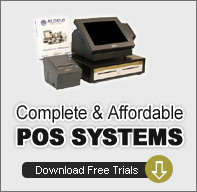Sauna POS HardwareBefore we decide on the hardware, we need to understand compatibility between the Openbravo POS software and the hardware we're about to purchase. Openbravo POS is a Java application, so it can be run on any platform. However, as we also require touch screen and MSR operations, it would be easier to deploy the target application on the Windows platform. One of the critical component of Spa & Sauna POS is to be able to read the "tag" that will be assigned to each guest (see pictures below: tag reader on the left, and tag on the right). A male will get a blue tag, and a female will get a red tag.
Another critical component we must support is a webcam. A webcam will allow a counter person to take a picture of a customer who purchases a monthly, quarterly, semi-annual, or annual membership. A webcam will be connected to the POS system via a USB Interface. A membership card will be issued with the customer's picture on it, and the Openbravo POS will popup a dialog box with a picture of the person when membership card is swiped on a MSR. A membership card will be programmed with a Magnetic Strip Writer device such as MSR 206 Reader/Writer apart from the Openbravo POS.
Now, the hard question to answer is whether to buy a standalone Desktop PCs, or All-in-One POS Stations. Desktop PCs and All-in-One POS Stations have both advantages and disadvantages. For compact and space saving design, an all-in-one station will work better but they generally cost more than double a desktop PC. If you're cost conscious, desktop PCs will do the required job at a much reduced cost. It's a matter of preference, but all-in-one stations are designed to last in a tough environment so if you have the budget we strongly recommend getting the all-in-one POS Stations. (see pictures below: all-in-one POS Station on the left, and Desktop PC on the right).
|
Copyright © touchPOS.net. All rights reserved.














